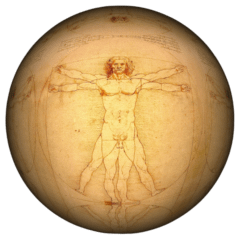The Apotheosis of Homer is a recurring theme in classical and neo-classical art, symbolizing the poet Homer’s elevation to divine status. This concept has been depicted in various artworks throughout history.
One notable portrayal of this theme is a 3rd-century BC marble relief created by Archelaus of Priene, now housed in the British Museum. It was found in Italy, probably in 1658, but is thought to have been sculpted in Egypt. This relief features Ptolemy IV and Arsinoe III standing beside a seated Homer, surrounded by figures from the “Odyssey” and “Iliad,” the nine Muses, Apollo, and Zeus overseeing the scene. It reflects the Greeks’ view of Homer as not just a great poet but as a divinely inspired source of all literature. In the 19th and 20th centuries, artists like Wedgewood, Ingres, and Salvador Dalí created their interpretations of this theme. The Apotheosis of Homer remains a compelling and enduring motif in the world of art and literature, celebrating the enduring influence of the ancient poet.
FURTHER READING AND SUGGESTED VIDEOS:
Do you like this topic? Find out more!

